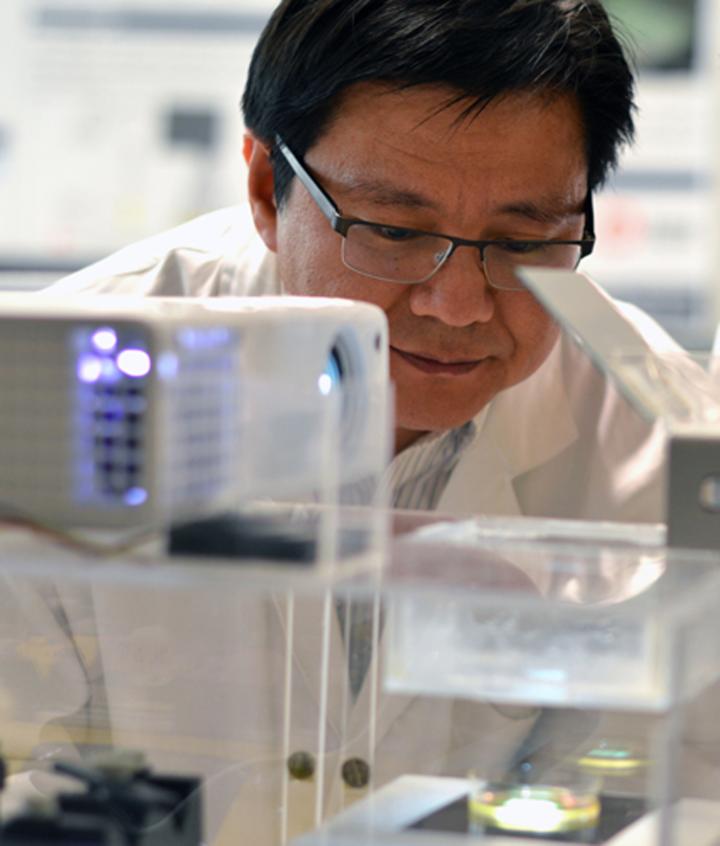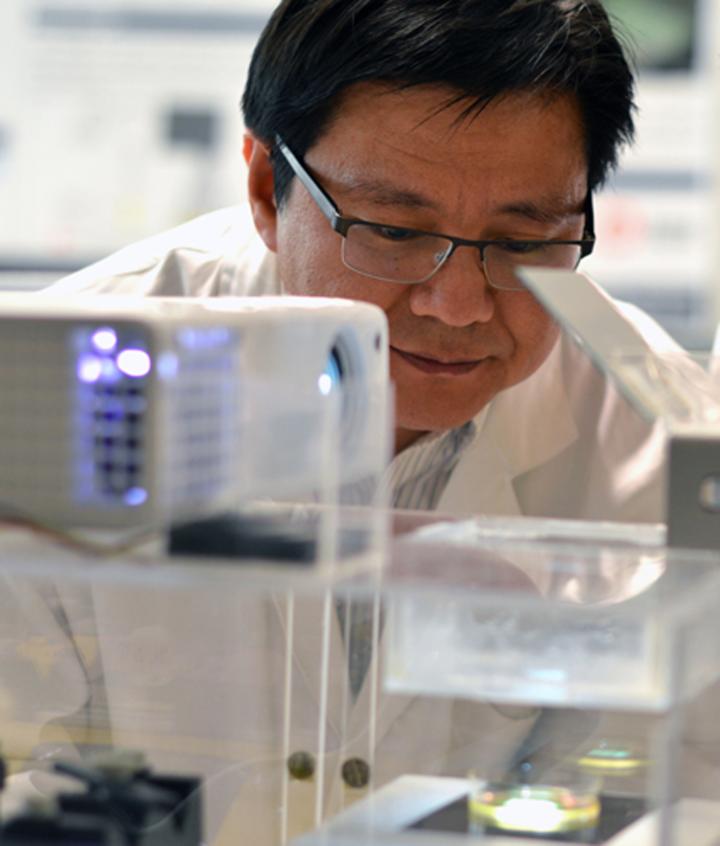
Credit: UBC Okanagan
A new bio-ink that may support a more efficient and inexpensive fabrication of human tissues and organs has been created by researchers at UBC's Okanagan campus.
Keekyoung Kim, an assistant professor at UBC Okanagan's School of Engineering, says this development can accelerate advances in regenerative medicine.
Using techniques like 3D printing, scientists are creating bio-material products that function alongside living cells. These products are made using a number of biomaterials including gelatin methacrylate (GelMA), a hydrogel that can serve as a building block in bio-printing. This type of biomaterial–called bio-ink–are made of living cells, but can be printed and molded into specific organ or tissue shapes.
The UBC team analyzed the physical and biological properties of three different GelMA hydrogels–porcine skin, cold-water fish skin and cold-soluble gelatin. They found that hydrogel made from cold-soluble gelatin (gelatin which dissolves without heat) was by far the best performer and a strong candidate for future 3D organ printing.
"A big drawback of conventional hydrogel is its thermal instability. Even small changes in temperature cause significant changes in its viscosity, or thickness," says Kim. "This makes it problematic for many room temperature biofabrication systems, which are compatible with only a narrow range of hydrogel viscosities and which must generate products that are as uniform as possible if they are to function properly."
Kim's team created two new hydrogels–one from fish skin, and one from cold-soluble gelatin–and compared their properties to those of porcine skin GelMA. Although fish skin GelMA had some benefits, cold-soluble GelMA was the top overall performer. Not only could it form healthy tissue scaffolds, allowing cells to successfully grow and adhere to it, but it was also thermally stable at room temperature.
The UBC team also demonstrated that cold-soluble GelMA produces consistently uniform droplets at temperatures, thus making it an excellent choice for use in 3D bio-printing.
"We hope this new bio-ink will help researchers create improved artificial organs and lead to the development of better drugs, tissue engineering and regenerative therapies," Kim says. "The next step is to investigate whether or not cold-soluble GelMA-based tissue scaffolds are can be used long-term both in the laboratory and in real-world transplants."
Three times cheaper than porcine skin gelatin, cold-soluble gelatin is used primarily in culinary applications.
###
The study was recently published in the August issue of Biofabrication.
Media Contact: Patty Wellborn
Assistant Communications Coordinator | University Relations
The University of British Columbia | Okanagan campus
Phone: 250-807-8463 | Cell: 250-317-0293
Email: [email protected]
ABOUT UBC's OKANAGAN CAMPUS
UBC's Okanagan campus is an innovative hub for research and learning in the heart of British Columbia's stunning Okanagan Valley.
Ranked among the top 20 public universities in the world, UBC is a globally recognized research-intensive institution whose Okanagan campus was established in 2005.
The Okanagan campus emphasizes smaller class sizes, experiential learning, and research activity for students, combining a world-class UBC degree with a tight-knit and entrepreneurial community.
As part of North America's most international university, the campus is home to 9,000 students representing 98 countries.
Media Contact
Patty Wellborn
[email protected]
250-807-8463
http://ok.ubc.ca/welcome.html





